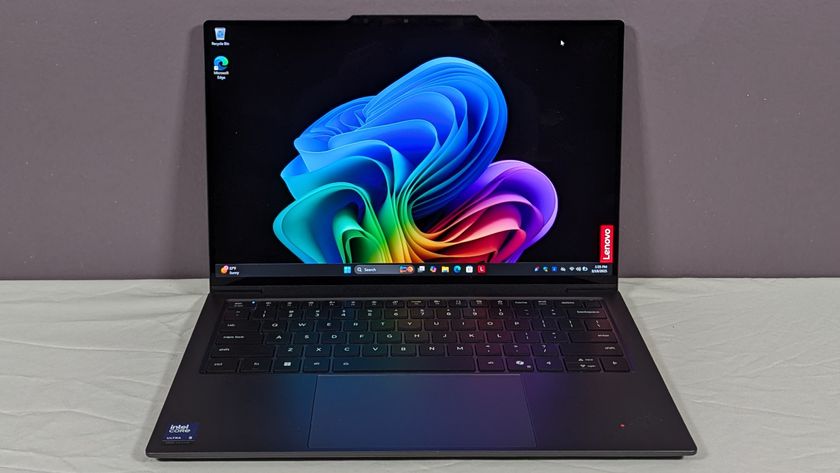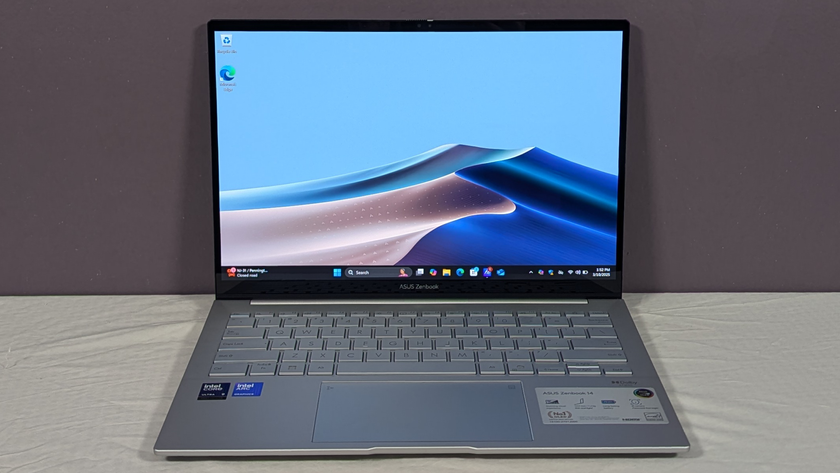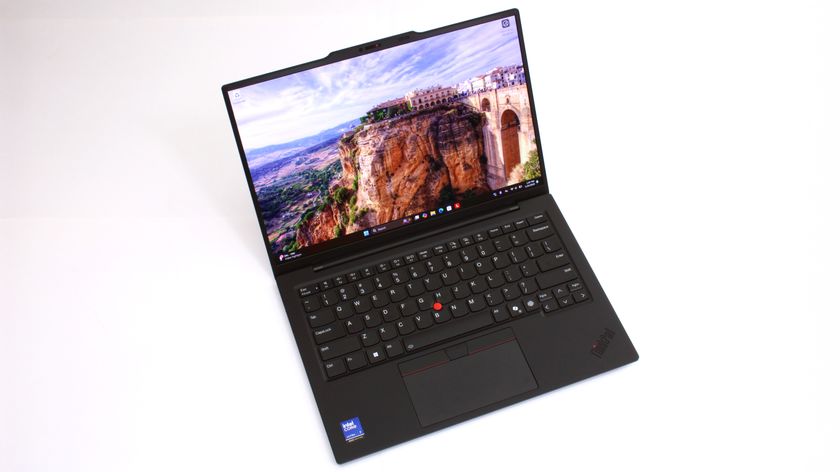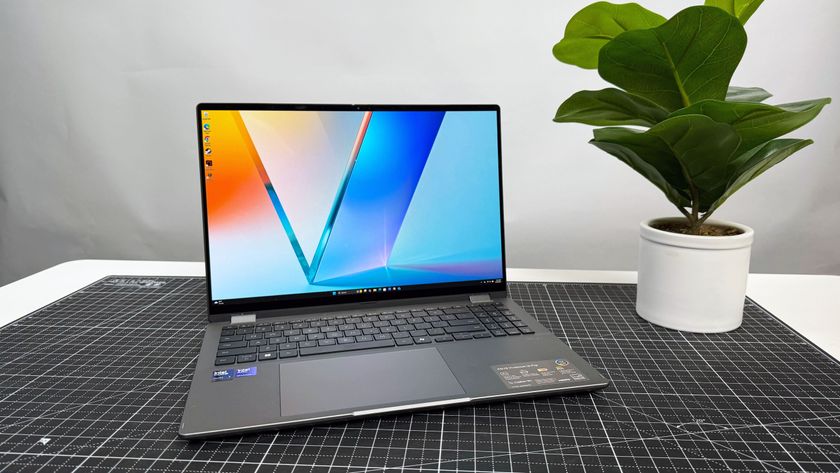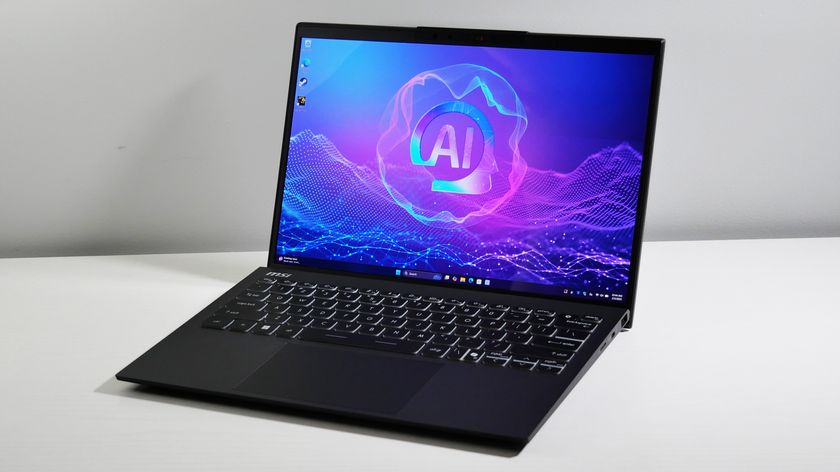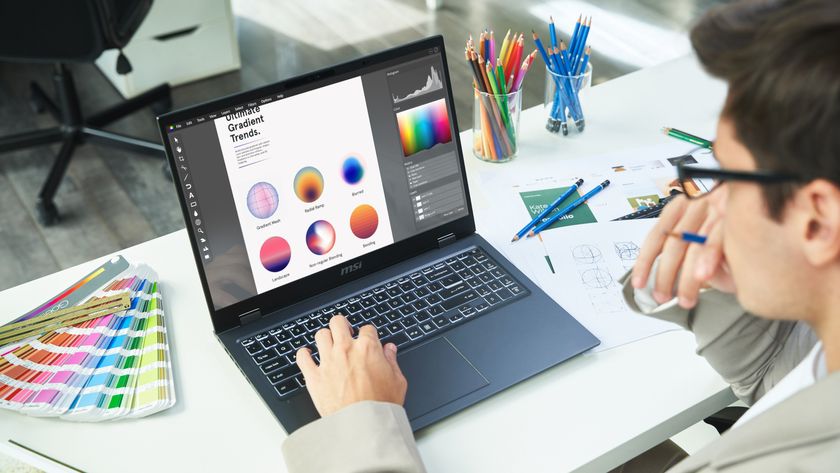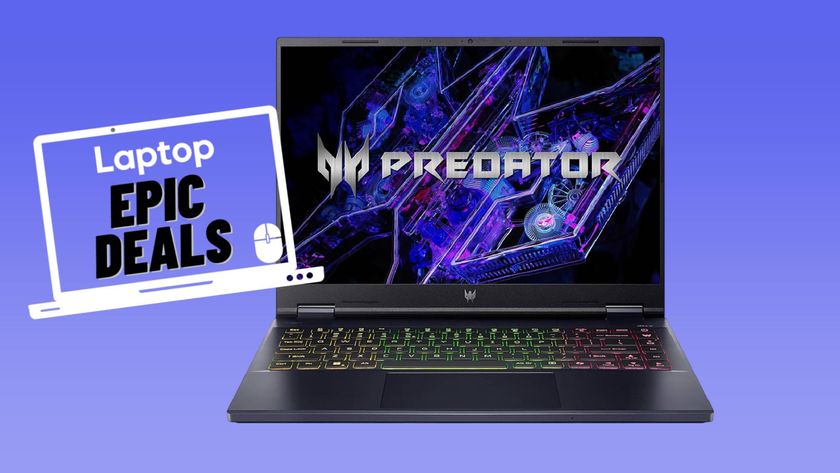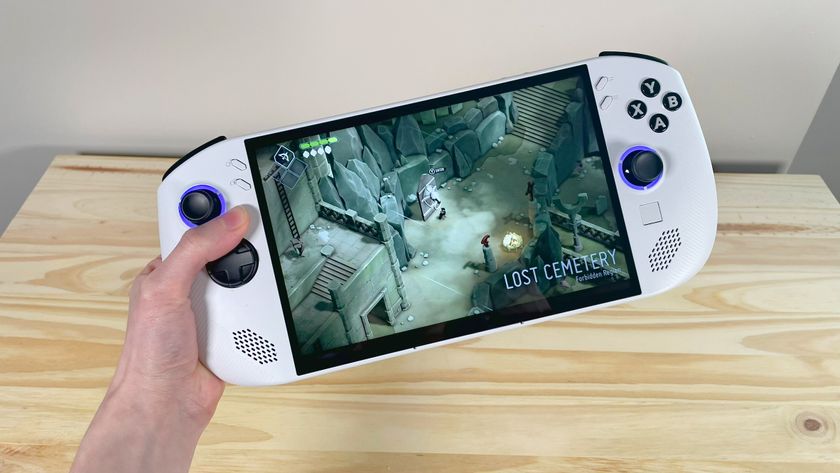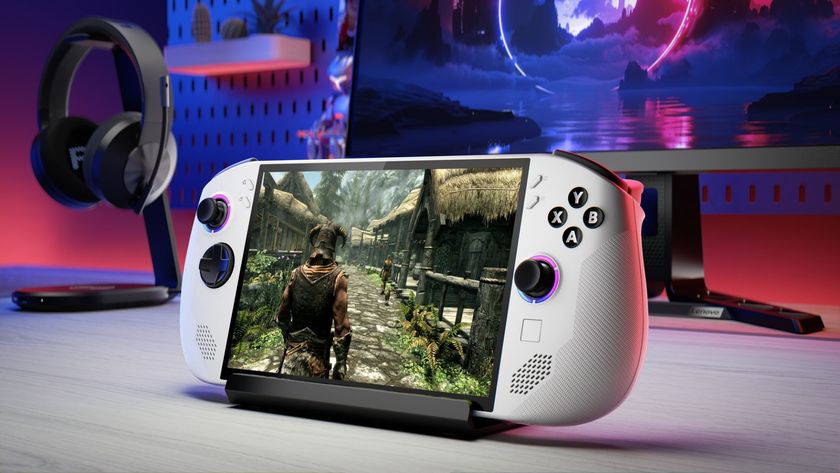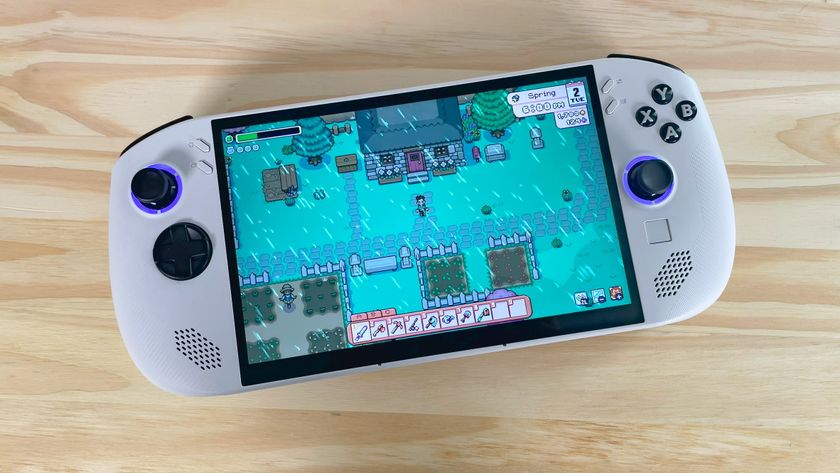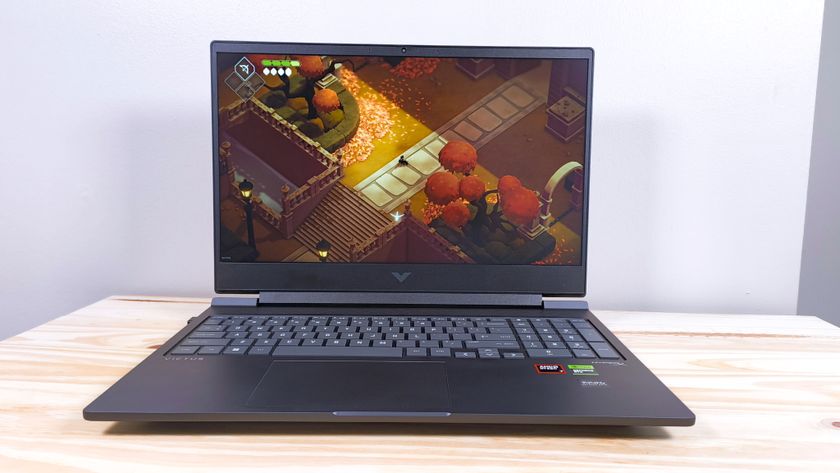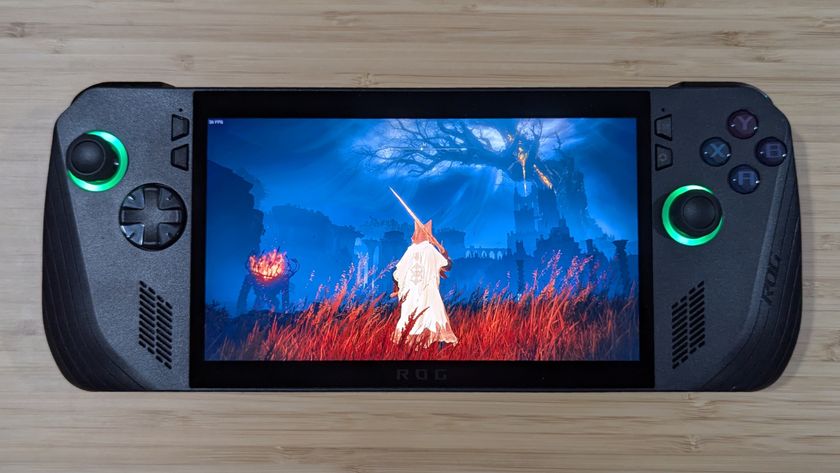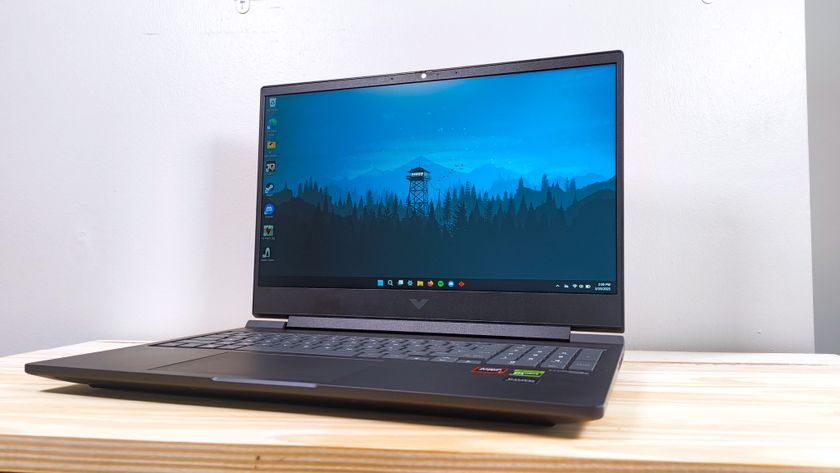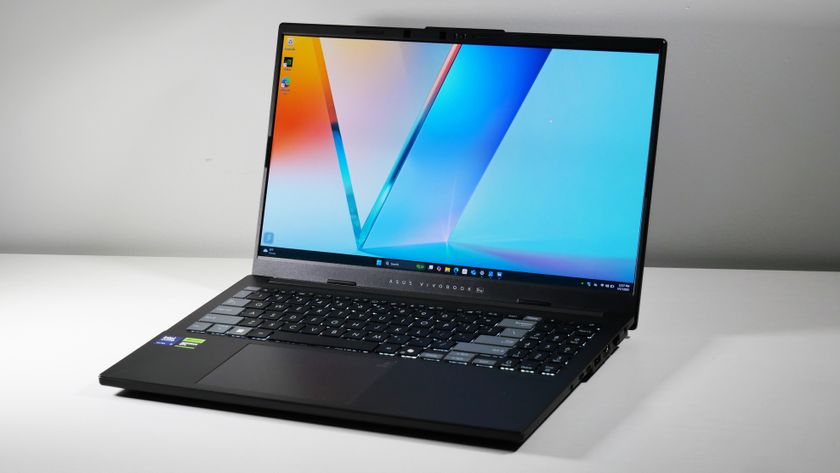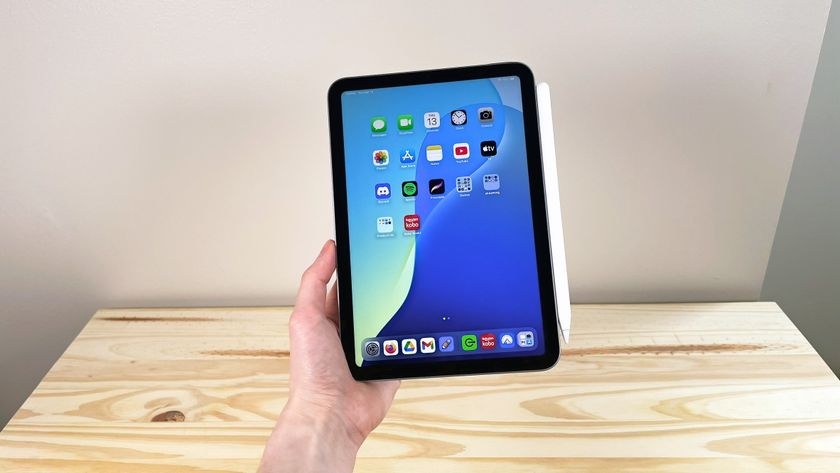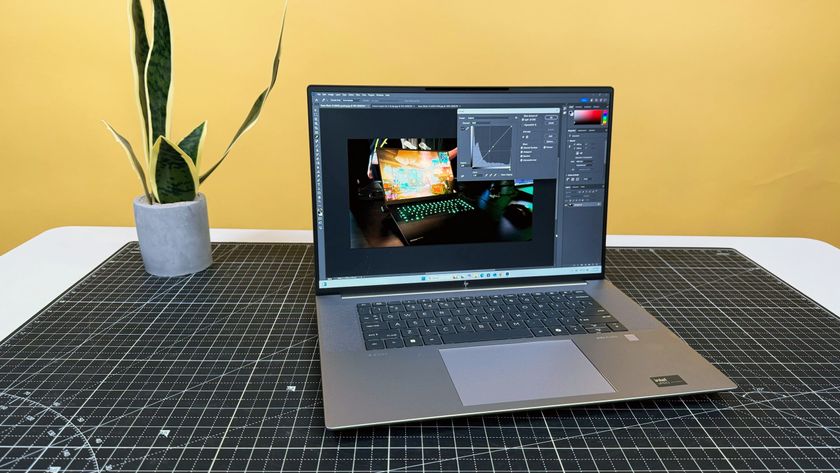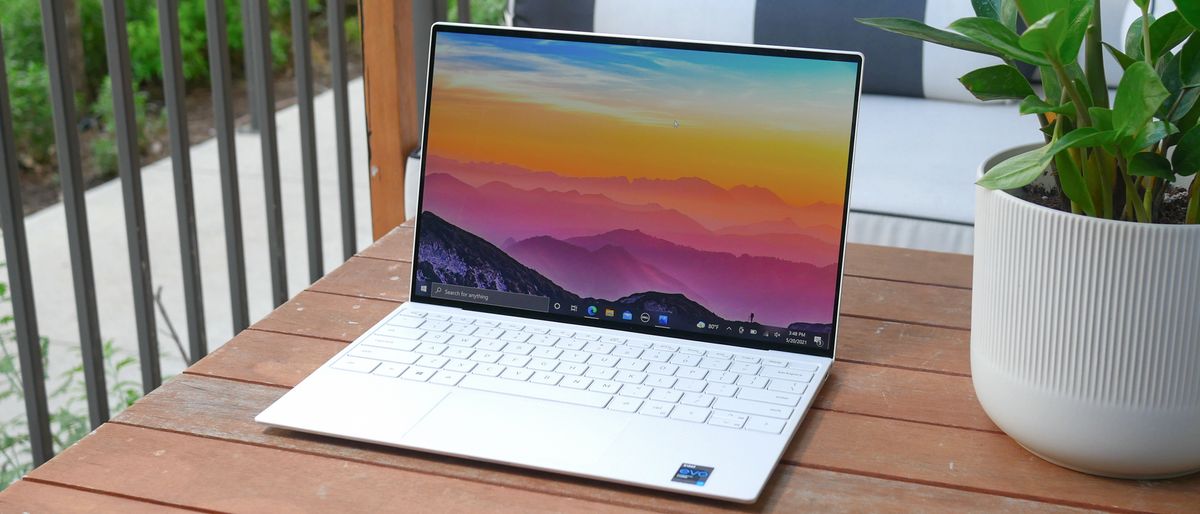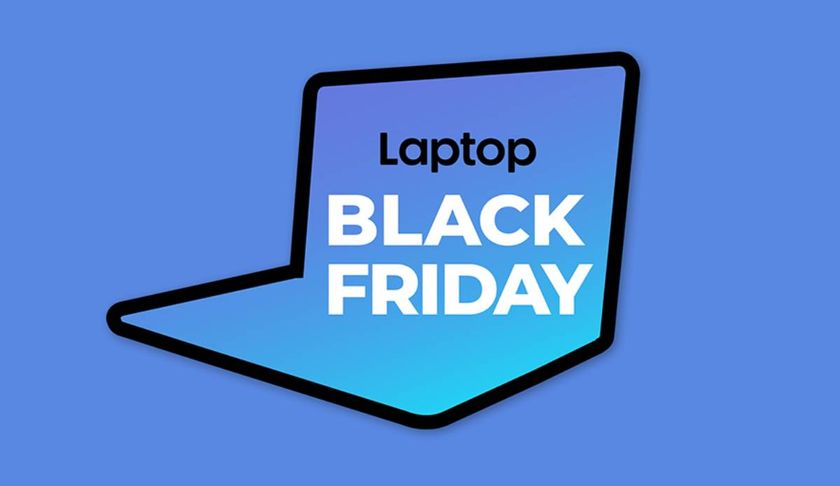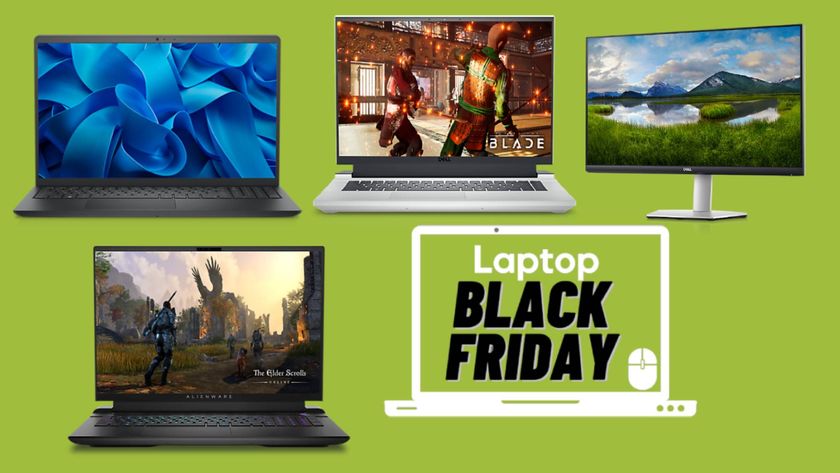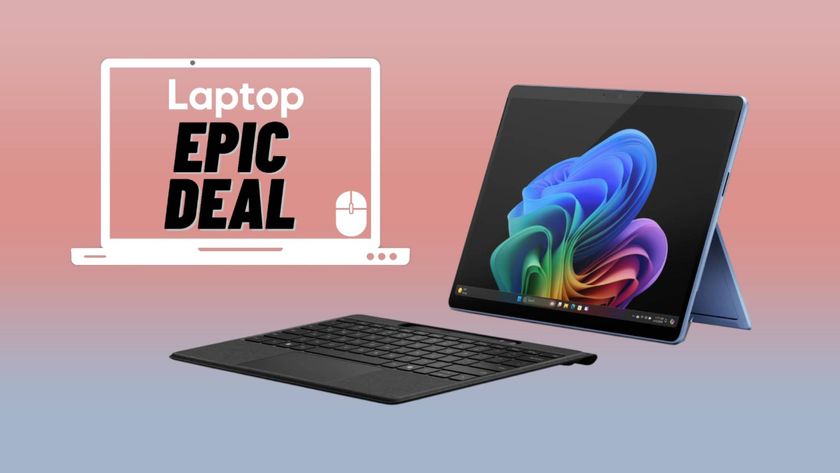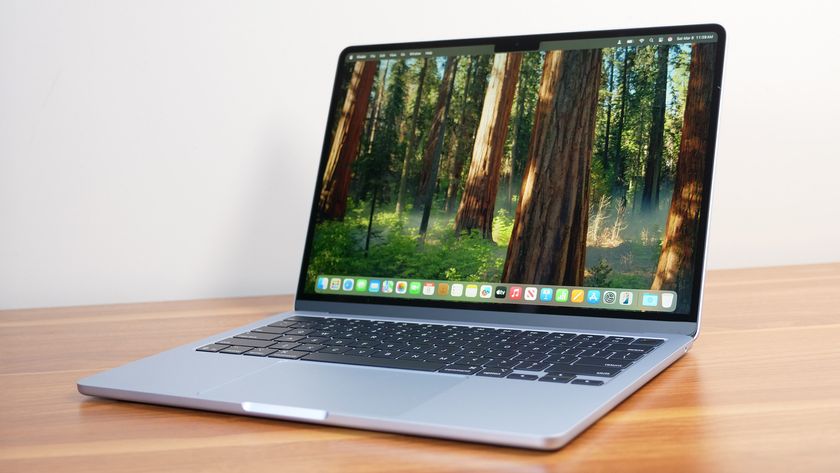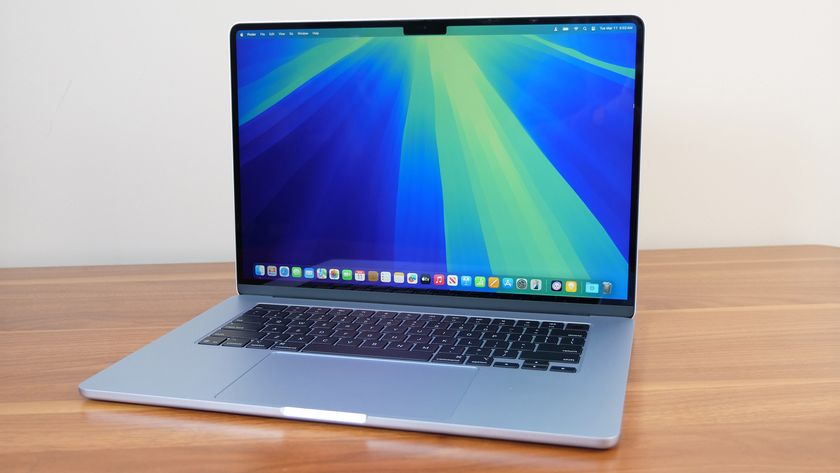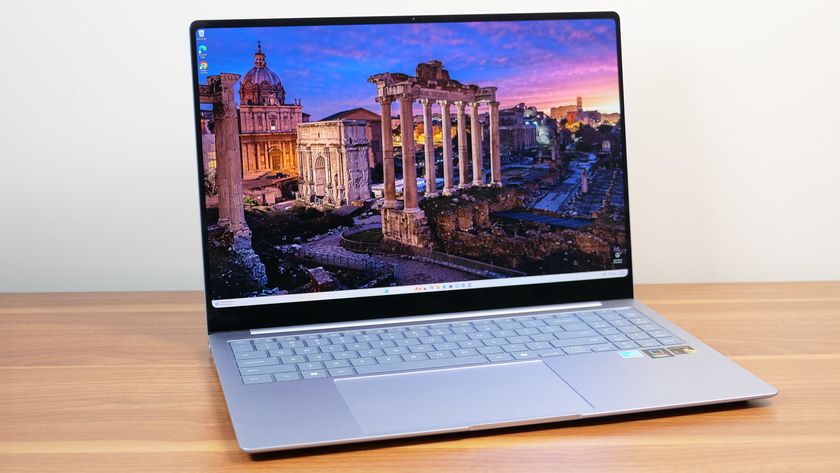Laptop Mag Verdict
Dell's XPS 13 OLED equips our favorite laptop with the best display yet — there are some sacrifices, but the overall package is mouthwatering.
Pros
- +
Breathtaking 3.5K OLED display
- +
Striking, ultra-thin design
- +
Portable yet sturdy chassis
- +
Fast performance
- +
IR camera and fingerprint sensor
Cons
- -
Battery life takes a hit with OLED
- -
Limited port selection
- -
No webcam shutter
- -
Weak graphics
Why you can trust Laptop Mag
Price: $1,649 ($1,699 as reviewed)
CPU: Intel Core i7-1185G7
GPU: Iris Xe
RAM: 16GB
Storage: 512GB
Display: 13.4-inch, 3456 x 2160 (3.5K) touch (16:10 ratio)
Battery: 7:59 (Dark mode); 7:48 (Light mode)
Connectivity: Wi-Fi 6, Bluetooth 5.1
Size: 11.6 x 7.8 x 0.6 inches
Weight: 2.8 pounds
The Dell XPS 13 OLED is what happens when the best laptop meets the latest display technology. Combining the two creates something close to magic — an ultra-portable device capable of running most tasks while providing a cinema-like viewing experience. Everything we love about the other XPS configurations remains, including the fast performance, striking design and top-rate touchpad.
But as they say, every action has an opposite reaction. The introduction of a high-res OLED display understandably takes a hit on battery life. It's not as drastic as you might have guessed; the XPS 13 lasts for more than 7.5 hours on a charge. If you can overlook the below-average runtime, then there is only one more hurdle to jump: the limited port selection.
Despite these shortcomings, the XPS 13 OLED is the best 13-inch laptop for those who want the best screen quality in a compact, premium chassis.
Dell XPS 13 OLED price and configurations
Upgrading to an OLED panel from the base FHD+ non-touch option costs an extra $400, matching the cost of the full 4K IPS option. That brings the starting price of the XPS 13 OLED to $1,649 when configured with an Intel Core i7-1185G7 CPU, 16GB of RAM and a 512GB NVMe SSD.
From there, your only option is to upgrade the storage, which costs $150 to go to 1TB or $450 for a 2TB SSD. There is one other choice — opting for the Frost exterior with Arctic White interior costs an extra $50.
Our Frost model with a 13.4-inch, 3.5K OLED display, a Core i7-1185G7 CPU, 16GB of RAM and a 512GB SSD costs $1,699.
Dell XPS 13 OLED design
Gazing at the XPS 13 is like opening the curtains after a snowfall and marveling at the fresh white blanket of powder on the ground.
The Frost version Dell sent me flaunts a silver lid and a white deck with a woven-glass fiber palm rest. The only dark element is a thin black bezel around the screen that contrasts against the colorful OLED panel. The light-toned hues, set against chrome trim and a Dell logo on the lid, give the XPS 13 an ultra-modern, sci-fi-like appearance.
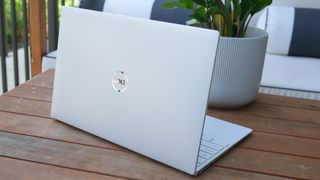
This very laptop popularized ultra-thin bezels years ago, and Dell continues to do it better than any other company. By eliminating the chin (the bezel below the screen), Dell created a bonafide four-sided InfinityEdge display. Best of all, the webcam remains above the display where it belongs.
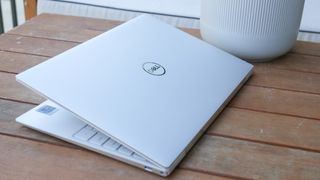
Clever engineering went into making the chassis as compact as possible. The outcome is a 13.4-inch laptop with the footprint of most 11-inch notebooks. At 11.6 x 7.8 x 0.6 inches and 2.8 pounds, the XPS 13 OLED can be easily slipped into a backpack (it even fits in my bag's tablet slot) or a purse; you will barely notice its presence. It is smaller than the Spectre x360 14 (11.8 x 8.7 x 0.7 inches, 3 pounds), the MacBook Pro (12 x 8.4 x 0.6 inches, 3 pounds) and the Microsoft Surface Laptop 4 (12.1 x 8.8 x 0.6 inches, 2.8 pounds).
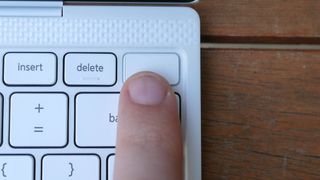
The XPS 13 might look petite, but it feels sturdy. The twin-coil hinges are strong, and yet, you can open the lid with one finger without the deck lifting. With a unibody design, the XPS 13 doesn't have any gaps where crumbs could land and the stiff tolerances suggest it could endure years of business travel. It's also practical; you get an IR camera for facial recognition login and a fingerprint sensor built into the keyboard, so you never have to remember those pesky passwords again.
Dell XPS 13 OLED ports
Ports are limited on the XPS 13's ultra-thin chassis, but you do get a few useful goodies.
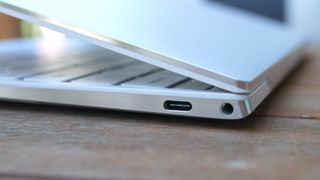
On the right side are a headphone jack and a Thunderbolt 4 port for charging, transferring data, or connecting to monitors.
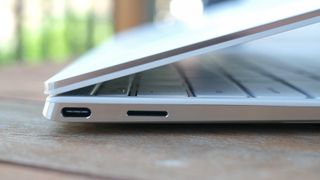
On the left side, you'll find another Thunderbolt 4 port next to a microSD card slot. I'm glad you get USB Type-C inputs on each side of the laptop, but a USB 3.1 Type-A input is sorely missed.
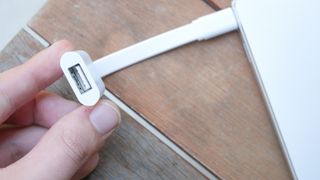
As a consolation, Dell packages a USB Type-A-to-USB Type-C dongle in the box.
Dell XPS 13 OLED display
Wow! I'm blown away. Choosing the 13.4-inch, 3456 x 2160-pixel (3.5K) OLED touchscreen gets you colors as vibrant as a lush forest after a fresh rainfall. If Windows 10 is the home of PC users, then this display gives every wall a fresh coat of paint. Icons burst with saturated tones, web images come to life, and 4K videos are beyond cinema quality. It helps that the edge-to-edge screen with a 16:10 aspect ratio draws your eyes in, providing an immersive viewing experience.
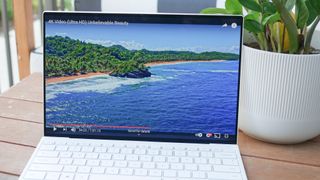
I usually start testing displays by downloading a movie trailer, but in this case, I couldn't help but watch 4K nature videos on YouTube for longer than my boss would have liked. I'm sure she will give me a break. After all, my eyes were at the mercy of this captivating panel as I stared mouth-agape as vibrant rainbow-colored birds perched atop tropical trees in a Costa Rican rainforest.
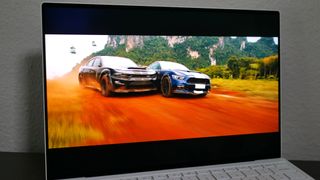
I knew the trailer for F9 (the next Fast and Furious installment) would bring the frenetic energy and ludicrous explosions that deserve to be viewed on this panel. This pixel-dense display lets me see every detail in the clip, including small shards of wood whizzing through the air after a car barrel-rolled into a restaurant. The deep Bayside Blue hue looked fantastic on a Nissan Skyline R34 GTR as it zipped by a vividly orange Dodge Challenger. Turning on Movie mode oversaturated the colors to an absurd degree; Vin Diesel looked spray-tan orange while the sienna-toned dirt road appeared radioactive. It's best to keep that mode off for the most accurate colors.
You can even interact with this panel as it supports touch inputs. I had no issues minimizing or closing windows by tapping on the small icon in the top-right corners, and as much as I hate on-screen keyboards, the responsive pixels let me type a website into the address bar with a few quick taps on the glass.
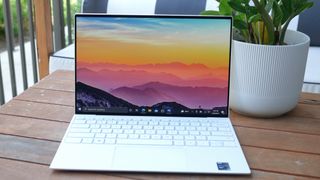
The OLED panel is capable of covering 83.1% of the DCI-P3 color gamut at the default setting, making it more vivid than those on the Surface Laptop 4 (77%), MacBook Pro (78.3%) and the category average (86%). Amazingly, the Spectre x360 14's 3K2K OLED panel covers 140%. So you can compare, the 4K display option on the XPS 13 covers 76.9%.
With 361 nits of maximum brightness and an infinite contrast ratio, the XPS 13's OLED panel can be easily viewed outside on a bright day. This is true, despite rivals like the MacBook Pro (435 nits) and the average premium laptop (392 nits), having brighter panels. The XPS 13 outshone the Surface Laptop 4 (349 nits) and the Spectre x360 14 OLED (339 nits).
Dell XPS 13 OLED keyboard and touchpad
An improvement upon previous XPS keyboards, the keys on the latest XPS 13 are fairly comfortable to type on.

The keys aren't as clicky as those on rival laptops, like the Spectre x360 or MacBook Air, but they don't feel stiff, either. There is decent travel, enough to prevent me from bottoming out, and the keys are all a proper size despite fitting onto a miniature deck. I also like the two-stage backlighting, which looks great against the all-white canvas.
Those with large paws may find the minimal spacing cramped while they're frantically typing a last-minute report, but it won't be a problem for most people. I typed at 117 words per minute with 95% accuracy, which outpaced my usual 109-wpm average with the same error rate.
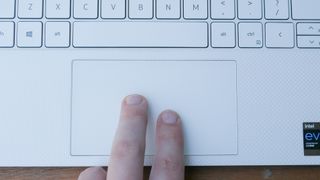
Gliding my index finger across the 4.4 x 2.5-inch touchpad felt like I was caressing the finest Mulberry silk. Soft, smooth, and ultra-responsive, the surface instantly reacted to my erratic swipes and Windows 10 gestures, like pinch-to-zoom and three-finger swipes to switch between windows.
Dell XPS 13 OLED audio
I'm surprised by how loud the XPS 13's speakers get, booming enough to easily fill my relatively large living room. Their location on the bottom sides of the laptop, however, isn't ideal. It means songs can sound muffled when you're listening to music with the laptop resting on soft material like workout joggers.
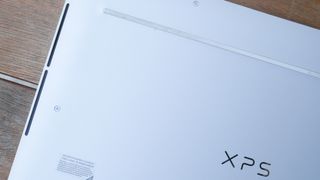
Placing the XPS 13 on my desk improved the clarity when I listened to Still Woozy's "Goodie Bag." The percussion and vocals in the song were crisp although the low-end was lacking. These speakers are passable, but a good pair of noise-canceling headphones will get you a big sonic upgrade.
Dell XPS 13 OLED performance
Equipped with an Intel Core i7-1185G7 CPU with 16GB of RAM, the XPS 13 is small but mighty. It moved quickly through my usual workload, which consisted of 20 or so Microsoft Edge tabs playing multiple 1080p YouTube videos. YouTube Music played in the background and no fewer than four Google Docs were opened concurrently. Best of all, the fans never kicked on during my testing and the bottom panel stayed at a comfortable temperature.
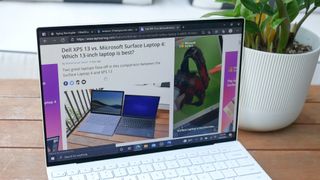
With a score of 5,345 on the Geekbench 5 overall performance test, the XPS 13 OLED skated by the Surface Laptop 4 (4,829, Core i7-1185G7), the Spectre x360 14 (5,004, Core i7-1165G7) and the category average (4,178). The MacBook Pro, with its mighty M1 chip, dominated its PC peers with a score of 5,882.
The XPS 13 didn't have as much fun on our video transcoding test, needing 18 minutes and 33 seconds to convert a 4K video to 1080p. The Spectre x360 14 (17:02) and Surface Laptop 4 (17:01) crossed the finish line before the Dell while the MacBook Pro (7:44) embarrassed the field.
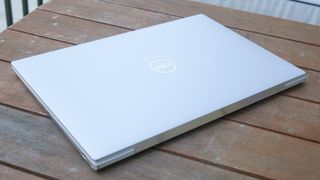
Transferring files will happen in a snap on the XPS 13 thanks to its speedy 512GB M.2 PCIe NVMe SSD, which duplicated a 25GB multimedia file at a rate of 814.4 megabytes per second. It trounced the category average (604.5 MBps), and topped the Surface Laptop 4 (562.7 MBps) and Spectre x360 14 (764 MBps).
Dell XPS 13 OLED graphics
We find the Intel Iris Xe graphics used in the XPS 13 to be adequate for playing older games or some newer ones at lower graphics settings. You can edit photos or video and stream 4K content without any sluggishness, but don't expect to run demanding simulations or play recent games at high graphics settings.
On the Sid Meier’s Civilization VI: Gathering Storm benchmark (Medium, 1080p), the XPS 13 hit 15 fps, falling short of the 20-fps premium laptop average, the Spectre x360 14 (20 fps, Iris Xe), the MacBook Pro (29 fps, M1) and the Surface Laptop 4 (30 fps, Iris Xe).
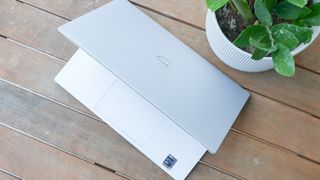
On the 3DMark Fire Strike benchmark, the XPS 13 notched 3,756, which couldn't keep up with the Surface Laptop 4 (5,089, 512GB M.2 NVMe PCIe SSD) or the Spectre x360 14 (4,229, 512GB NVMe PCIe SSD). The category average sits at 4,488.
If you're a gamer wanting to play Halo Infinite when it finally arrives, consider buying a gaming laptop or eGPU.
Dell XPS 13 OLED battery life
So the high-res OLED panel looks fantastic, but what does it do to battery life? All I can say is: bullet dodged. No, it won't last a full workday on one charge, but the XPS 13 OLED did a respectable job on our Laptop Mag Battery Test, all things considered.
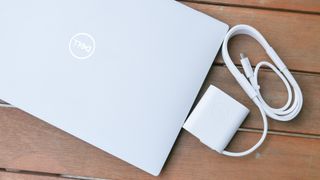
With dark mode turned on, the XPS 13 lasted for 7 hours and 59 minutes while browsing the web with the brightness set to 150 nits. Turn Windows 10 Light mode back on and that number drops to 7:48. Why the discrepancy? Because with OLED panels, each individual pixel turns off (no light emitted) to create perfect black levels. Stopping the flow of electric current to a group of pixels saves some energy.
About eight hours of battery life is short of what we expect from a modern ultra-thin laptop (10 hours is the new benchmark), but it's a good result considering the 3.5K resolution and OLED technology. It's longer than the runtime of its closest competitor, the Spectre x360 14, which could only muster 7 hours and 14 minutes with a 3K2K OLED panel. Of course, the MacBook Pro (16:32) and Surface Laptop 4 (10:46) will stay powered for much longer, but that's comparing very different fruit.
It's also worth mentioning that the 1080p XPS 13 stayed powered for 11 hours and 7 minutes on a charge while the 4K XPS 13 powered down after 7 hours and 32 minutes — almost half an hour before the 3.5K OLED model.
Dell XPS 13 OLED webcam
It’s not the best, but it’s not the worst, either. The 0.1-inch 720 webcam on the XPS 13 produces better picture quality than I expected given the size constraints. It did a good job of capturing the heathered maroon color on my T-shirt, and the opaque brown hue on the upper half of my glasses.

There was some visual noise despite the good lighting conditions in my office, so consider buying an external webcam for important meetings with the boss or those long-overdo family e-reunions.
Dell XPS 13 OLED heat
We ran a 15-minute, 1080p video and measured certain areas of the laptop to test the XPS 13's cooling. It did a decent job. The touchpad reached 79 degrees Fahrenheit while the middle of the keyboard hit 88 degrees, both of which are well below our 95-degree comfort threshold. The metal undercarriage, however, reached 102 degrees.
Dell XPS 13 OLED software and warranty
I would prefer a single app instead of the seven or so Dell-branded apps taking up space in my Start Menu, but at least the pre-installed software is useful. The self-explanatory Dell Update is a must-keep app where you'll get the latest BIOS updates and drivers. With another on-the-nose name, Dell Power Manager shows your battery health and lets you change thermal settings.
Dell CinemaColor is especially important on this OLED panel as it lets you shift the color balance based on what you're viewing. Movie mode saturates colors, Night saves your eyes, and Sports ensures animations flow smoothly. I also want to highlight Dell Cinema Guide. It's a beautiful app where you can find TV shows and movies, and quickly see which streaming apps they're available on.
There are a few unneeded apps, like McAfee Personal Security, but the amount of pre-installed software is inoffensive excluding all the standard Windows 10 Home apps.
The XPS 13 comes with a one-year warranty. See how Dell fared on our Tech support showdown and Best and worst brands special reports.
Bottom line

The latest XPS 13 model debuts a gorgeous OLED panel that provides rich picture quality for when you're streaming movies at home or editing videos for work. Is it worth the tradeoff to battery life? If you need a high-res display, then yes. The 3.5K OLED display outlasted the 4K IPS config in our battery test and is capable of producing a wider range of colors. And since it costs the same ($1,649 to start), there is no reason to buy the non-OLED 4K model (unless you really need those few extra pixels).
The trickier decision is between the FHD+ display or the 3.5K OLED option. The standard XPS 13 lasted for more than 11 hours on a charge, or about three hours longer than this model, and it goes for $400 less. It's a tough choice — and having this magnificent panel glowing in front of my eyes is almost unfair — but I'd still recommend the FHD+ model to most people. If you use your laptop for content editing or to exclusively stream movies or shows, then the 3.5K OLED upgrade may be worth the compromises. For everything else, the standard 1920 x 1200-pixel panel will do just fine.
But don't count out other ultraportable options. HP's Spectre x360 14 is a better choice than the XPS 13 OLED if you need a 2-in-1 laptop that you can use in tablet mode with a stylus. And while the Surface Laptop 4 doesn't have any standout features, its 13.5-inch display is also gorgeous and the keyboard is the best in this class of laptops.
Overall, the XPS 13 OLED brings an excellent display upgrade to what was already our favorite laptop, and it does so without too many sacrifices.
Phillip Tracy is the assistant managing editor at Laptop Mag where he reviews laptops, phones and other gadgets while covering the latest industry news. After graduating with a journalism degree from the University of Texas at Austin, Phillip became a tech reporter at the Daily Dot. There, he wrote reviews for a range of gadgets and covered everything from social media trends to cybersecurity. Prior to that, he wrote for RCR Wireless News covering 5G and IoT. When he's not tinkering with devices, you can find Phillip playing video games, reading, traveling or watching soccer.
